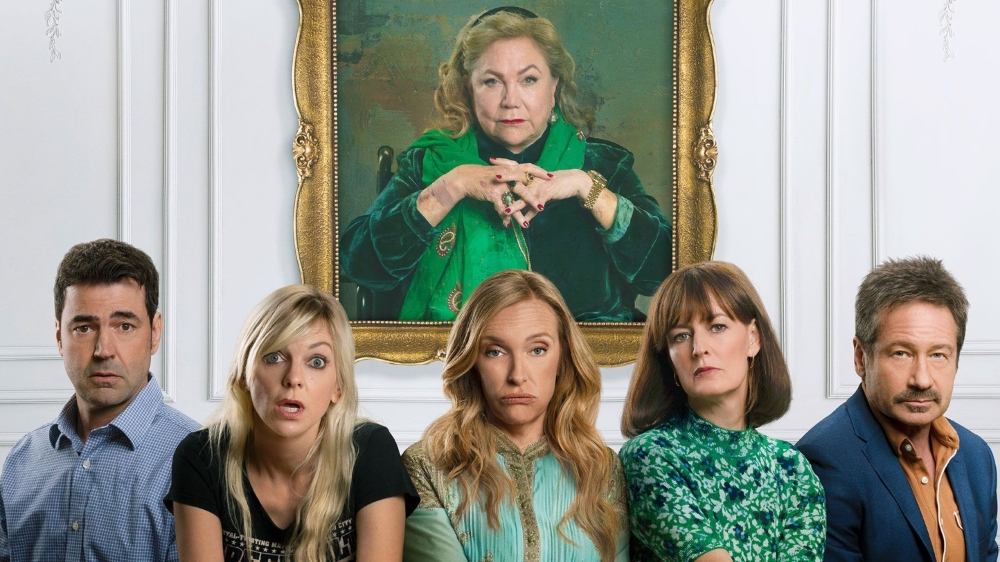
Dean Craig’s screwball comedy The Estate follows a group of adult cousins played by Toni Collette, Anna Faris, David Duchovny, and Rosemarie DeWitt as they fight to convince their curmudgeonly aunt who is terminally ill (Kathleen Turner) to leave her grand estate to them. For this over-the-top experience, Craig needed to create a loose and accessible feel, which he did with the help of Cinematographer Darin Moran.
Moran is a longtime camera operator who handled additional photography on the Point Break reboot and went on to shoot the Blumhouse thriller Run Sweetheart Run and the Hannah Marks comedy Banana Split. He also served as DP on the Hong Kong unit for Godzilla vs. Kong. Moran also recently completed stints as the second unit DP on The Out-Laws and The Beanie Bubble, so he’s developing a name for himself within the comedy space.
Below the Line spoke to Moran about the importance of letting the comedy in The Estate speak for itself, and making use of limited space to frame the story. He also discussed his work on a few high-profile Marvel shows and how it’s possible to still be creative within the existing Marvel Cinematic Universe, as well as his memorable experience working with the legendary Terrence Malick on The New World, which marked a turning point in his career.
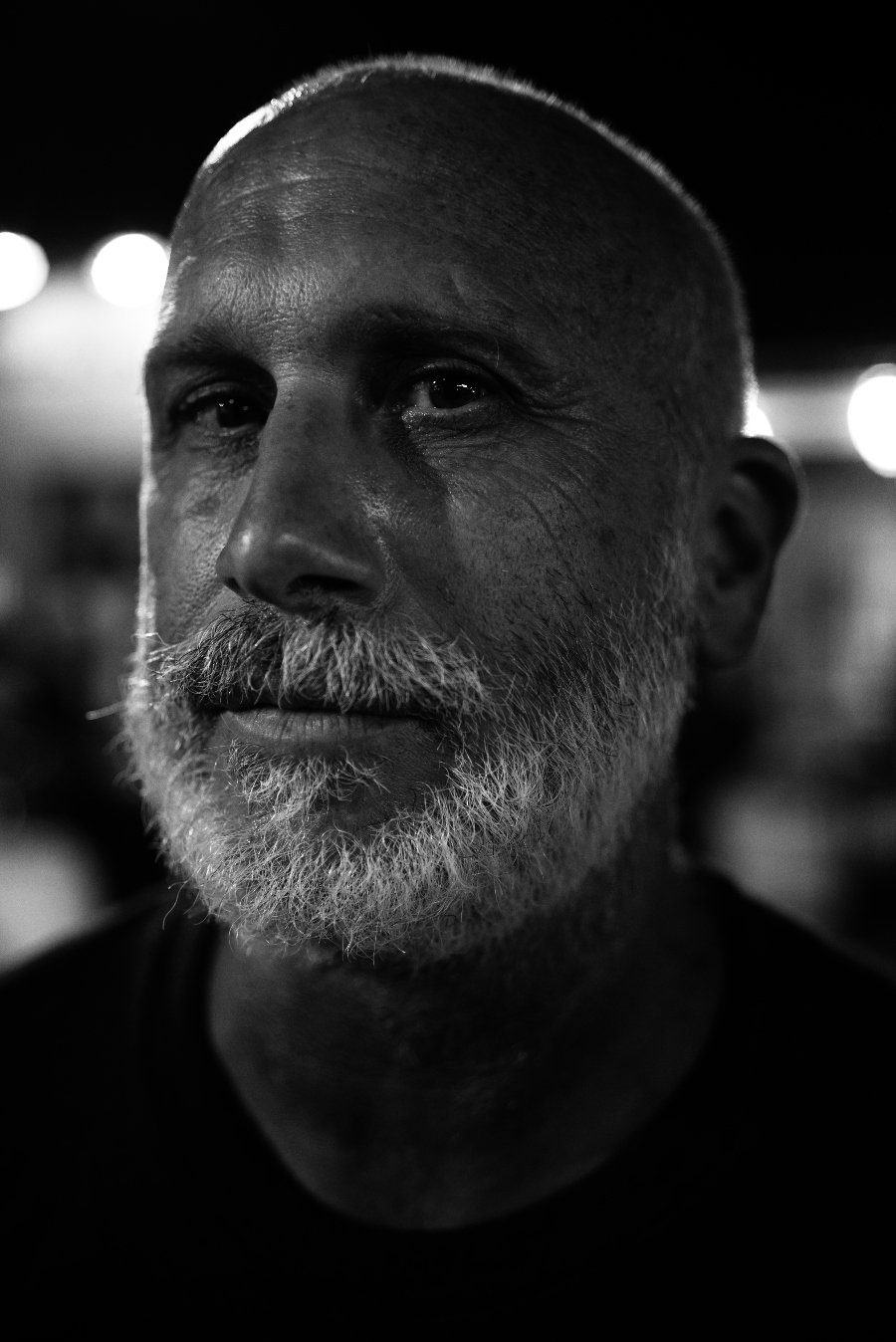
Below the Line: For The Estate, what was your collaborative process like with director Dean Craig?
Darin Moran: We worked together in pre-production and, as we got to know each other after he had hired me, we wanted to do something that was really loose and that felt authentic. We wanted to retain some of the immediacy of the script. The script reads really fast and it’s very ridiculous. In order to keep the audience moving along, we felt that it had to be photographed really casually and not be presentational, and not be too glossy, like a more presentational comedy would be. So we worked really hard to remind ourselves not to be too precious about frames.
The lighting is very naturalistic. All the scenes are lit, but it’s meant to look like a naturalistic film, in the sense that we didn’t want anything to pull people out, because once you’re pulled out… when you come back in, it’s so ridiculous that you might not have the audience at that point. The script really read like that, so as we looked at images and discussed ideas, things gelled around the way it was written, and that came from him. It wasn’t difficult to nail down a style. We created some parameters for ourselves and then we stuck to that plan.
BTL: I noticed early on, especially with a lot of the characters talking in hallways and rooms in that big house, there are a lot of close-ups, and rather than seeing the scene happening with both characters in it, you’re very often centered on one person, which to me suggested a focus on the power dynamics of that specific moment of the conversation.
Moran: Absolutely. In a lot of those scenes, we didn’t do a lot of wide coverage always. It was really about the subjectivity of the characters, and a lot of those interactions are very tense, and so we wanted to be in there. Dean wanted to be up with them.
BTL: And then you have the big dining room, where you do have that big group shot, but people are clearly seated in a particular way. There’s obviously a lot of intentionality behind it, even in the looseness that you’re talking about.
Moran: Yes. And that comes from Dean’s ideas about blocking, especially those table scenes. The comedy plays really well when you pop out to that wide shot, and there’s a little bit of dead air space, and you can feel everybody’s reaction at the same time. It’s very useful.
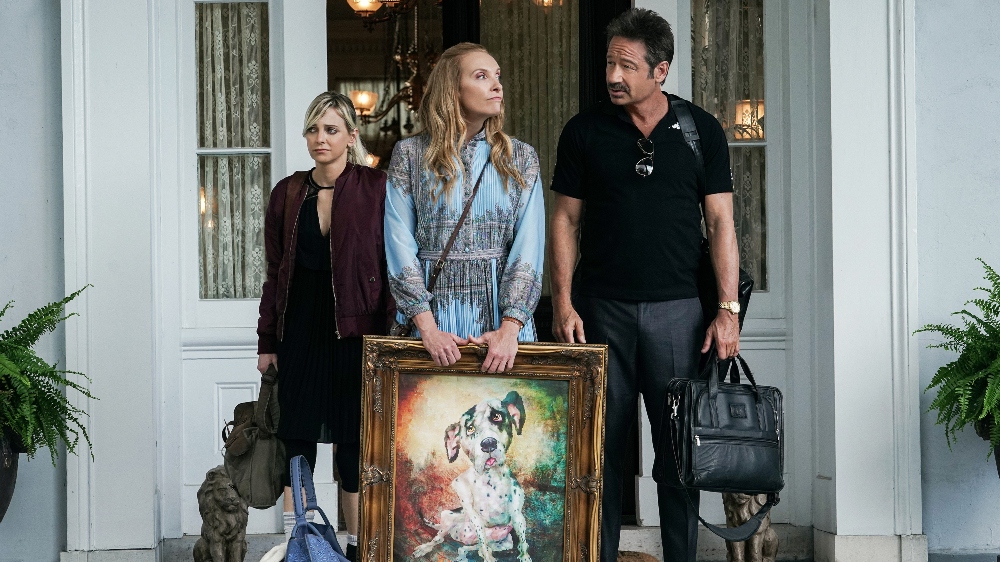
BTL: There are few scenes — not many — that take place outside of the house. Was that liberating, to be able to have a new framework?
Moran: It was good. It’s always good to have a change of venue. In a movie like this that was sort of limited in scope because of the time frame in which we had to photograph it, it was written specifically to be something that we could photograph very easily and make our days. So the days outside were nice. They were a nice change from being in the house for sure. It’s always good for the crew to get a change of venue here and there. It perks everybody up.
BTL: Were there any specific cameras or lenses that you needed that you may not have expected for this project?
Moran: No, it was pretty straight[forward]. We didn’t do anything that required any sort of special lenses. I have an affinity for Panavision lenses, so we used the Panavision Panaspeeds, which are 65mm format lenses, which cover the full frame on the LF. So it’s like shooting medium format photography. It has a lot of fall off. They’re gorgeous lenses. Dan Sasaki at Panavision worked with me to get a de-tuning that suited the material and our aesthetic for the movie. Yeah, but nothing fancy really, just straight-up photography.
BTL: I did note that, on your resume, as a Director of Photography and a camera operator, you have a lot of action on there. Do you enjoy this light comedy and do you want to do more of it in the future?
Moran: I like everything, honestly. I was thrilled to get something like this as a feature. I have done a lot of action. I’m so open to all different genres. I really want to pursue a wide scope of films. I love the challenge. It really comes from the writing. For me, if I read something and it resonates with me, I don’t have a problem with any genre. I would go anywhere.
BTL: You worked on three Marvel shows — Moon Knight, Hawkeye, and The Falcon and the Winter Soldier — which are possibly the most action-oriented Marvel shows. Is there a need or desire to make them all look somewhat similar in this large universe?
Moran: They’re all different in the ways that the creators, the executives, and the main unit directors sculpt the world. They all seemed to fall into a pattern of a Marvel look. Certainly, I think the color space is similar. The scoring is similar, the characters, obviously, people recognize. It all kind of varies. The way I look at Marvel stuff often is that there’s a bandwidth of creativity that you can work in, and if you can figure out what that bandwidth is, it’s really satisfying, because the people are fabulous, super collaborative, and fun to work with. If you find that little space where you can be creative, it’s wonderful.
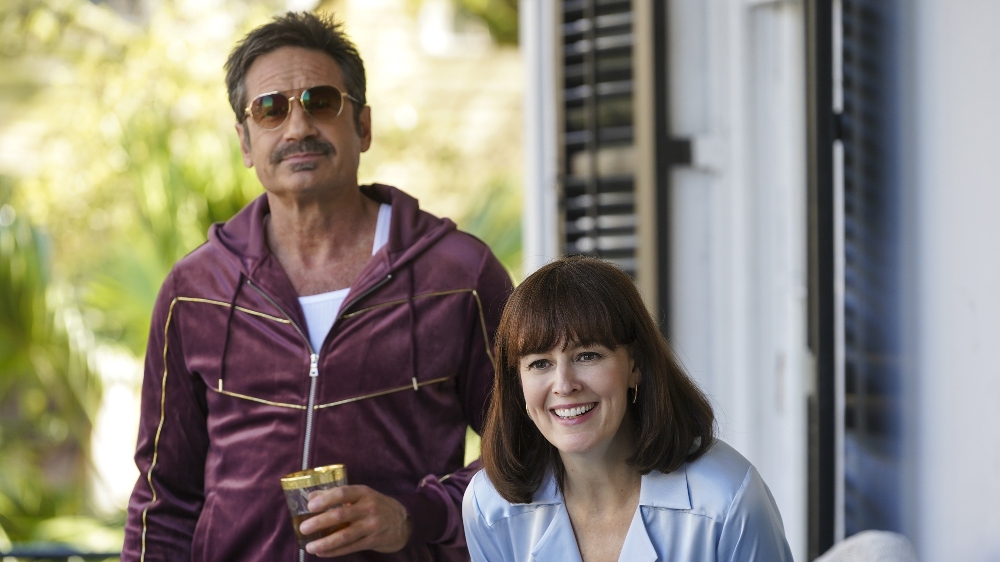
BTL: From all the projects that you’ve worked on in your career, do you have any that really stand out as particularly memorable or challenging experiences?
Moran: Oh yeah, a couple. I think this was a turning point in my life as I became a cinematographer. When I was an assistant, I did a movie with Terrence Malick called The New World, which was shot in Virginia in the swamps.
BTL: A nice low-budget, relaxed environment, I’m sure?
Moran: It was hard work. It was probably the hardest physically and mentally challenging job because it was hot, there were leeches and bugs and swamps and long days. There were difficult locations, and it was rough. But it turned me on to the notion of different processes. Distinct directors have distinct processes. And that was a big shift for me because a lot of the stuff we all work on is very similar in the way it’s constructed. There are formulas. There are patterns people fall into. There are people, like, Terry is one of them, and a few other directors I’ve worked with who have their own distinct process, and that’s what makes their films distinct, both visually and narratively.
Ultimately, it comes from the writing, but then add that distinctiveness in the process of filmmaking, and you really have something original. That’s when I realized what was happening on that movie, after I shed my regular patterns of work, because I didn’t have a choice, otherwise I wouldn’t have survived and we wouldn’t have gotten the work done. Yeah, that was a memorable experience that really imprinted on me how to shake up the process of filmmaking, to draw out those original interpretations of the writing that you might have.
BTL: Do you find it’s easier to work with someone who has that process as opposed to someone who is a bit less structured?
Moran: I wouldn’t say Terry is structured. He has a distinct approach, which is how he works, and everyone follows. It’s different on every film. Films especially can be wildly different in the experience and it all comes from the person who’s directing.
BTL: I do want to ask you about a film whose poster I see over your shoulder, which is Banana Split. You have it in the frame, so I feel like we have to talk about it.
Moran: This great film was another great experience, and the director Ben Kasulke, who is a good friend, it was his first movie as a director. It’s a fabulous movie, and very funny, and very original. It got the pandemic treatment. Its theatrical release was scheduled for March of the year that COVID started, and the theaters shut down. It went to streaming after having a pretty good festival run and sadly got lost in the fray. But it’s something that I think people would really like. It’s something that everyone who’s seen it has loved. I’m super proud of the photography. It’s a great movie, and Hannah Marks, the writer and the woman who stars in it, is so cool. She’s so badass. She’s awesome.
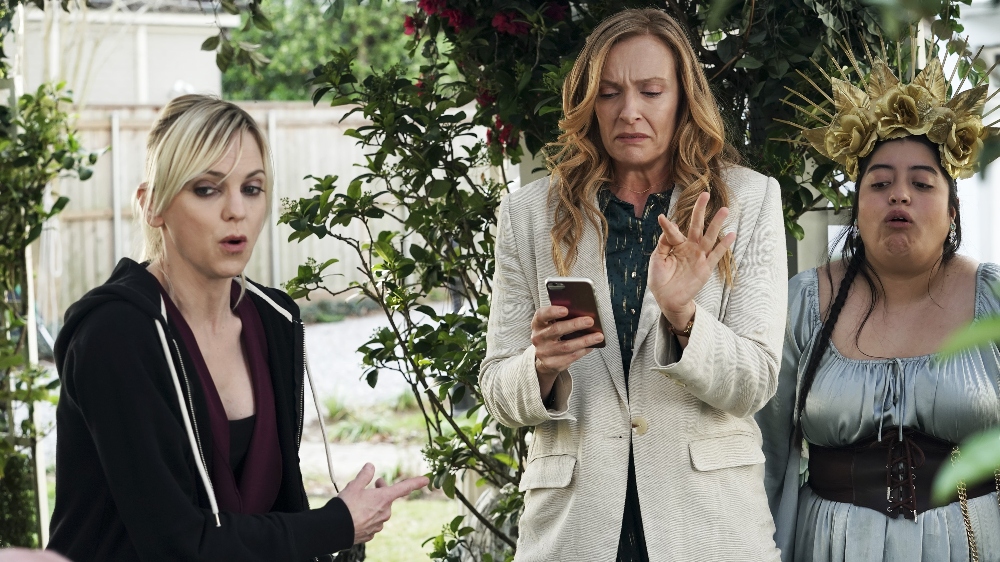
BTL: You’ve worked in both TV and film. Now, we have a lot of films that, whether intentionally or not, are headed for streaming to be watched at home. Do you feel like that detracts greatly from the experience?
Moran: I think it depends on the material. Obviously, from my background, I love watching films in the theater. I hope that experience doesn’t go away. I think it’s a great thing to share a film with a bunch of people in a big space and see it on a big screen larger than life. It’s tough because you never really know when you’re making a film nowadays what the end result is going to be. I mean, back in the day, you would make photographic decisions based on where it was going to play. If it was a TV show, you would structure the photography around the device people are watching it on.
Now, it’s like, it plays everywhere, so what’s the strategy for that? I’ve adhered to a strategy of just, when I’m working on a film and not a TV show or a streaming show, focusing on the theatrical experience and imagining myself sitting in a theater watching it. Is this close-up too close? Is this wide shot wide enough? How is it going to affect the viewer when they watch it on the big screen?
BTL: The New World, I don’t think would have been a great straight-to-streaming release, and I know that I was lucky at the Toronto International Film Festival, I saw two films that are coming to Netflix, which surprised me since they were both such intensive and very different experiences: All Quiet on the Western Front and Glass Onion: A Knives Out Mystery. Two films that most people will watch at home, and I don’t know that that was the intention in making them, especially a big war epic.
Moran: I would like to see that film in a theater. Both of those films. I don’t know what the Netflix model is going to be in the future, but I hope it combines a theatrical experience for people, because it’s a great thing, right? Is that why you got into movies, watching them in the theater?
BTL: That’s a good question. I think I cover just as much TV, so I wouldn’t say I’m partial to the theatrical experience. There are so many advantages to watching at home. Even if it’s not the same scope, you’re more comfortable. You can eat during the movie or stop to go to the bathroom. It’s also been different during the pandemic. Toronto with my first big festival experience back, and there were so many people in the theater. You get reactions, which I’m not sure matters during a war movie, but something like Glass Onion, people are going to watch at home. They’re going to miss so much of that experience, not even a visual thing but a people thing.
Moran: That shared experience. Totally. The grandiosity of a war film, and the scope of it, seeing it in a larger-than-life experience. I don’t have a home theater that’s larger-than-life at my house, but if I did, that would make watching a film like that at home a little bit more palatable for me, because you could be more immersed in the sound and the images.
BTL: Can you preview any other projects of yours that are coming up?
Moran: I just finished doing 12 weeks of second unit on this Marvel streaming series which I can’t talk about, sadly. I can’t divulge anything, but there’s something new coming. There’s also The Outlaws. I did the second unit photography on The Outlaws. It’s Adam DeVine, Pierce Brosnan, and Ellen Barkin, and there’s a car chase in there. I don’t want to give anything away, but that’s the portion that we did. It’s very fun. It’s a comedy.
The Estate is now playing exclusively in theaters.





